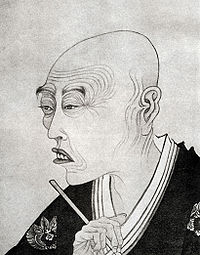Biography of Japanese Painter
Tani Buncho (1763 - 1840)

Buncho was born in Edo as the eldest son of Tani Rokkoku.
Tani Rokkoku was a samurai and Kanshi poet who served the Tayasu family
(=One of the three branches descended from Tokugawa Yoshimune, the 8th
Shogun).
When Buncho was 12 years old, he studied the Kano style painting under
Kato Bunrei.
When he was 18 years old, he also became a disciple of Watanabe Gentai.
As Kato Bunrei deceased when Buncho was 20 years old, he studied the old
Chinese painting style (Hokuso-ga) under Kitayama Kangan.
When he was 26 years old, he planned to go to Nagasaki for study of painting.
In the course of his trip, he studied the formal Nanga style painting under
Kushiro Unzen at Osaka.
Thus, Buncho studied a variety of painting styles and he established his
own style by fusing them together.
Buncho inherited the samurai status from his father and also became an
official painter for the Tayasu family.
When Buncho was 30 years old, he changed his lord to Matsudaira Sadanobu
who served as the chief of staff for Shogun.
By order of Sadanobu, Buncho made many sketches of old drawings and treasures.
Buncho traveled around Japan and he sketched many mountains including Mt.
Fuji.
Buncho cultivated many disciples such as Watanabe Kazan or Tachihara Kyosho.
Buncho emphasized the importance of making sketches and copying old drawings.
When 75 years old, he was ordained as Hogen (second highest rank of which
painters could receive).
Therefore, he was very prosperous.
Buncho deceased in 1841 at the age of 79.
He was buried in the Genku-Ji Temple at Asakusa.





